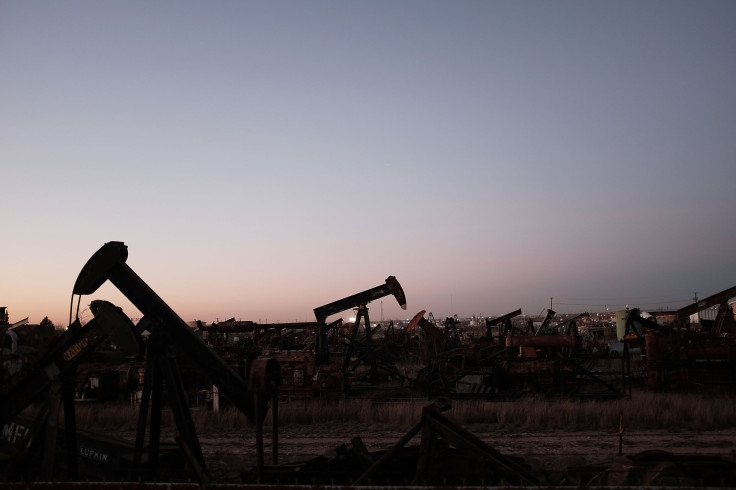Oil Markets Rattled As Saudi Arabia Casts Doubt On Global Crude Production Freeze Deal

When Saudi Arabia speaks, the world oil market jolts. The kingdom helped boost global prices last month when it first backed a proposal to freeze crude production and stem the world’s oversupply of oil. This week, a deputy crown prince said the deal wouldn’t happen without support from key producers like Iran, sending prices down by over 4 percent on Friday to open the second quarter.
That Saudi Arabia’s words alone can steer oil prices shows how influential the world’s largest oil exporter remains, despite rising competition from U.S. shale oil producers and other oil-rich nations. It also points to the knee-jerk nature of oil markets, which lately seem to respond more to speculation than the reality on the ground, analysts said.
“The market is being duped, or at least those people that are still buying [news of an oil deal] are being duped,” said Dominick Chirichella, co-founder of the Energy Management Institute in New York. “There’s a view by some who are a little more optimistic that this production freeze deal could turn into a production cut. It’s pie-in-the-sky to think that.”
Saudi Arabia in February agreed to join Venezuela, Qatar and non-OPEC member Russia in freezing oil production at January levels. The news initially boosted prices in the hope the deal could crimp the global supply glut this year. But some observers brushed the proposal off as a distraction from actual market dynamics. The Saudis produced about 10.2 million barrels of oil a day in January, only slightly less than the kingdom’s record high of 10.5 million barrels a day seen in June 2015 while Russia hit its highest output in the post-Soviet period in January. A freeze would merely lock in these elevated supply levels.
Saudi officials also have long insisted they won’t join the pact unless Iran, Iraq and other major oil producers agree to follow suit, raising doubt about whether the deal will actually happen. Iran said it wouldn’t entertain the discussions until it boosts production to pre-sanction levels. Iran isn’t expected to attend an April 17 meeting in Doha, Qatar, where a dozen OPEC and non-OPEC producers will discuss the possible output cap.
Amid all this “will they, won’t they” chatter, Saudi Arabia is reportedly boosting its own output. The kingdom and neighboring Kuwait are expected to resume oil production at a joint offshore field, which produced around 300,000 barrels of oil per day before it was closed in October 2014 for environmental reasons. The new output could help exacerbate the global supply glut, which outstrips world oil demand by nearly 2 million barrels a day, according to the International Energy Agency.
While uncertainty around the freeze has swirled for weeks, Saudi Arabia’s Deputy Crown Prince Mohammed bin Salman still managed to cause a stir Friday. In a late-night interview with Bloomberg, he reiterated the kingdom will only freeze oil output if Iran and other key players follow suit. Brent crude prices recoiled early Friday, dropping to less than $40 a barrel.
“The market is just getting a dose of reality,” Chirichella said. “And as the market continues to look at the fundamental information [on supply and demand], they’re going to be less enthusiastic about OPEC and Russia talking about a freeze.”
He noted global oil production hasn’t slipped by as much as expected, despite the fact that low oil prices have pummeled independent and state-run companies. The industry has slashed more than $100 billion in investments and laid off tens of thousands of workers as prices plunged from above $100 a barrel in June 2014 to less than $27 a barrel in January 2016.

Oil production in non-OPEC nations grew by 1.5 million barrels a day in 2015 over the previous year, thanks largely to surging U.S. shale and offshore oil production, the U.S. Energy Information Administration (EIA) estimated. OPEC output, led by Saudi Arabia and Iran, ticked up 800,000 barrels a day last year over 2014 levels.
Non-OPEC production could drop by 400,000 barrels a day this year, driven as a result of cutbacks across the U.S. shale patch, marking the first decline in output since 2008. But new crude supplies from OPEC countries would still grow by 700,000 barrels a day, assuming the cartel doesn’t agree to a production cut, the federal statistics agency said.
The dip in new output won’t do much to boost prices unless global oil inventories also start to decline, analysts said. Crude inventories are expected to rise by an annual average of 1.6 million barrels a day this year and by an extra 600,000 barrels a day in 2017. The added inventory is “larger than previously expected, delaying the rebalancing of the oil market and contributing to lower forecast oil prices,” the EIA said in its short-term energy outlook report.
With oil demand growth projected to remain sluggish, the supply-demand imbalance will persist. “There will be no rebalancing this year,” Tamas Varga of oil brokerage PVM told the Wall Street Journal Friday.
© Copyright IBTimes 2024. All rights reserved.











